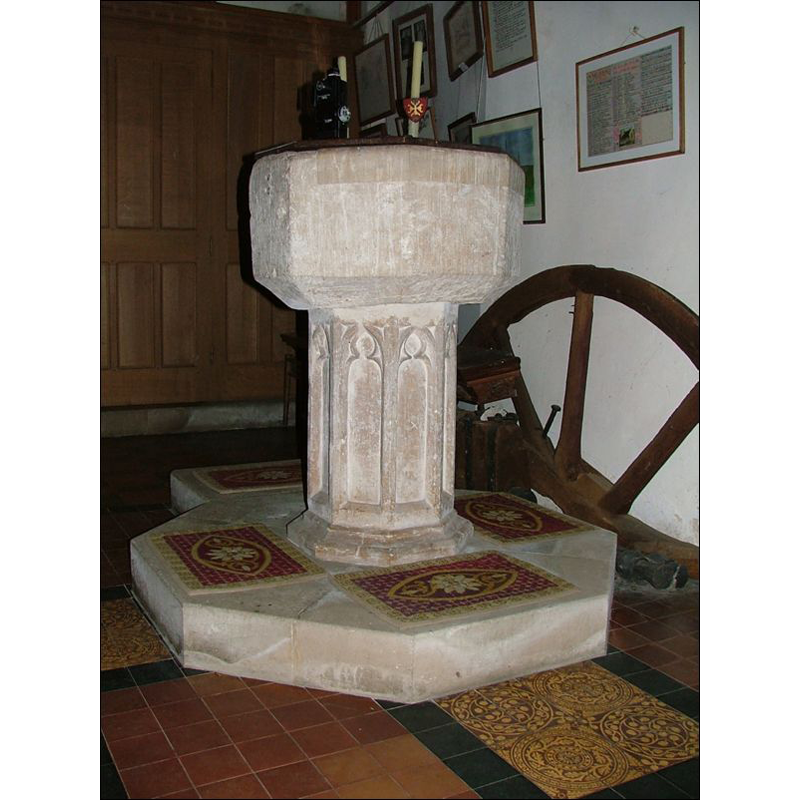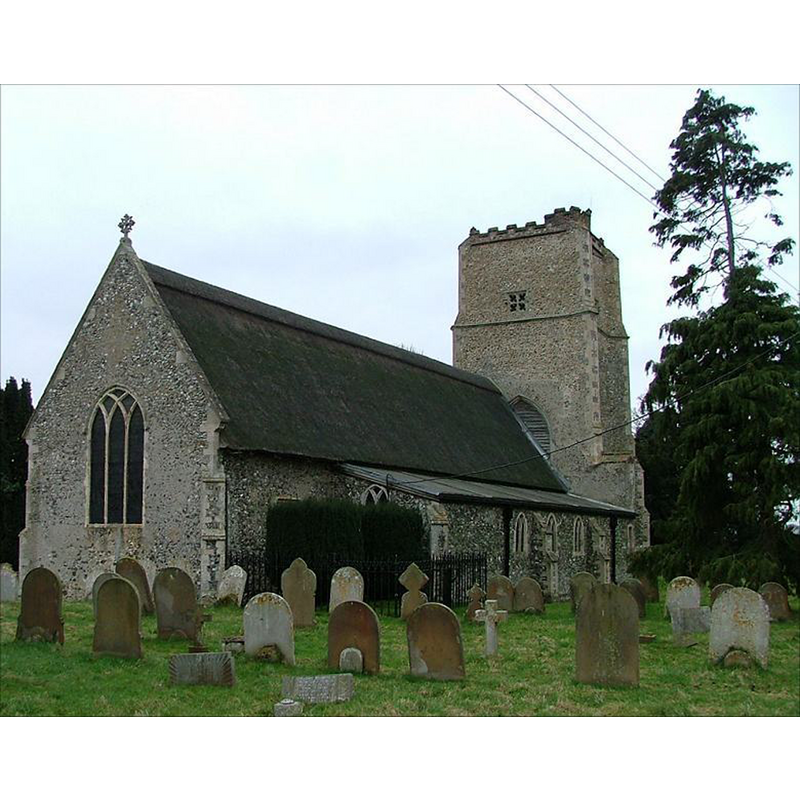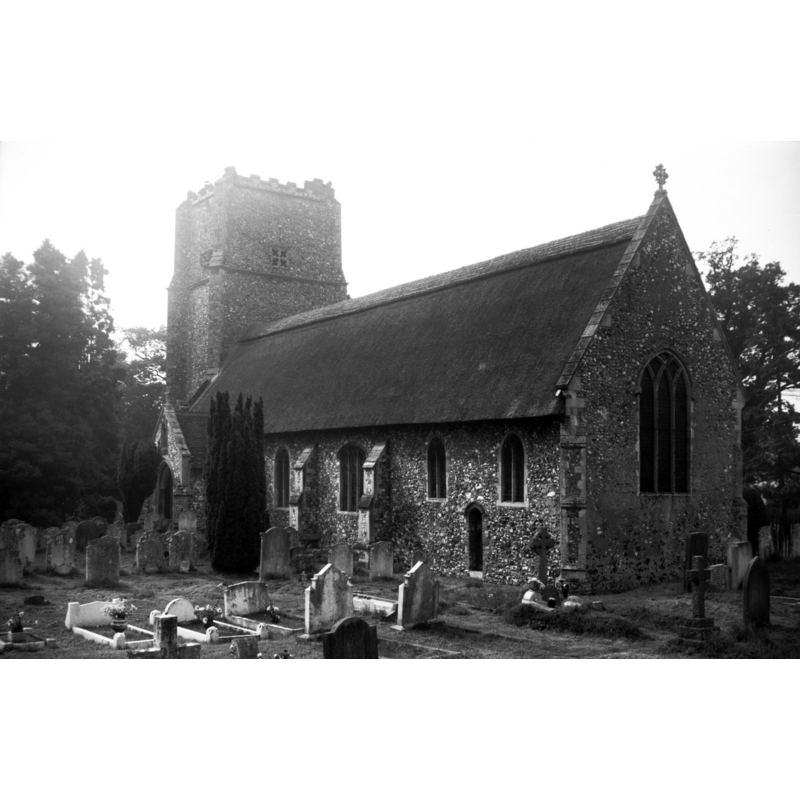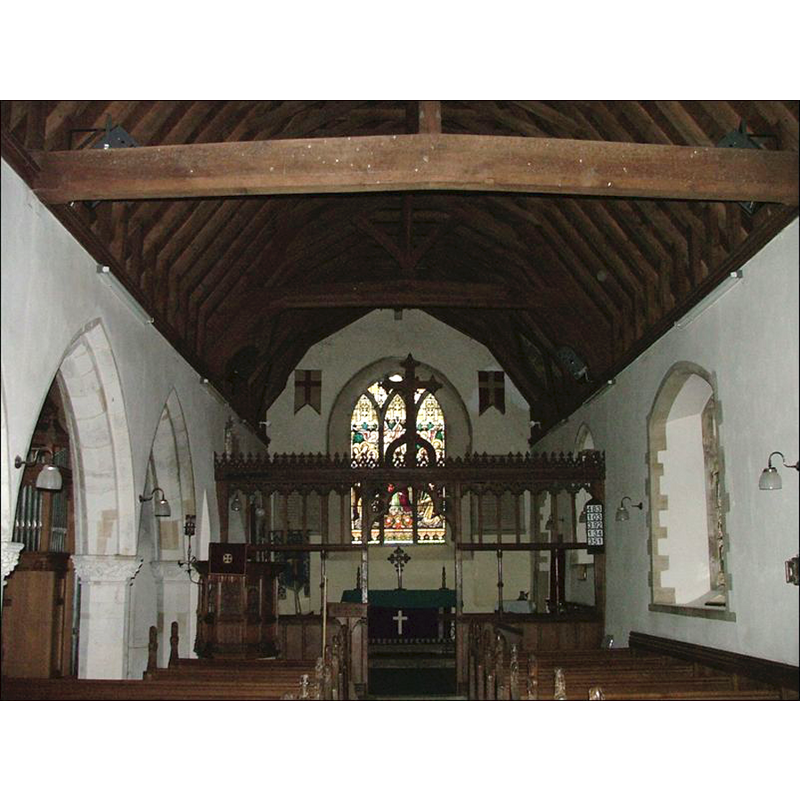Salhouse / Sallowes / Sallows / Salthous

Image copyright © Simon Knott, 2009
Standing permission
Results: 5 records
design element - architectural - arch or window - trefoiled - 8
view of church exterior - northeast view
view of church exterior - southeast view
Scene Description: Photo caption: The tower appears never to have been finished as it lacks a top storey. The church is entirely thatched"
Copyright Statement: Image copyright © George Plunkett, 2014
Image Source: B&W photograph taken 16 August 1965 by George Plunkett [www.georgeplunkett.co.uk/Norfolk/S/Salhouse All Saints church from SE [4929] 1965-08-16.jpg] [accessed 16 April 2014]
Copyright Instructions: Standing permission by Jonathan Plunkett
view of church interior - nave - looking east
INFORMATION
FontID: 14915SAL
Object Type: Baptismal Font1
Church/Chapel: Parish Church of All Saints [originally from the Parish Church of St. Fabian and Sebastian, Woodbastwick]
Church Location: Bell Lane, Salhouse, Norfolk, NR13 6RR
Country Name: England
Location: Norfolk, East Anglia
Directions to Site: Located 10 km NE of Norwich
Ecclesiastic Region: Diocese of Norwich
Historical Region: Hundred of Taverham
Font Location in Church: Inside the church at Salhouse
Century and Period: 14th - 15th century, Medieval
Credit and Acknowledgements: We are grateful to Simon Knott, of www.norfolkchurches.co.uk, for the photographs of this church and font; we are also grateful to Jonathan Plunkett for the photographs of this church, taken by his father, George Plunkett, in August 1965
Font Notes:
Click to view
Blomefield (1805-1810) has "Sallowes" aka Sallow/Shallows/Salthous, as a hamlet to Wroxham: "There was formerly a chapel in this hamlet, to which the vicar of Wroxham is also instituted, with his vicarage, there seems, to have been one at the time of the Conqueror's survey, wherein it is said that there were 2 churches, as may be seen in the account of Beaufoe's manor in Wroxham; it was dedicated to All-Saints; the churchyard belonging to it is mentioned in 1465, and in 1523." The present font here is noted in Pevsner & Wilson (1997): "Font. From Woodbastwick church. Octagonal, with panelled stem." Noted and illustrated in Knott (2005): "The churchwarden confirmed Mortlock's story that the font came from Woodbastwick at the time of the rebuilding there". The font consists of a crude and plain octagonal basin that has been repaired with large sections of inserty stone at the rim; it may have been re-tooled; it is raised on a stem of the same shape with a trefoiled arch on each side; the small splaying lower base is also octagonal. The wooden cover is octagonal, flat and plain; appears modern. [NB: there is a 19th-century (?) baptismal font and cover at Woodbastwick that may have been introduced at the renovation by Sir Gilbert Scott -- for a view of the latter font cf. entry for Woodbastwick in Knott (2005)]
COORDINATES
Church Latitude & Longitude Decimal: 52.682807, 1.40574
Church Latitude & Longitude DMS: 52° 40′ 58.1″ N, 1° 24′ 20.66″ E
UTM: 31U 392230 5838179
MEDIUM AND MEASUREMENTS
Material: stone
Font Shape: octagonal (mounted)
Basin Interior Shape: round
Basin Exterior Shape: octagonal
LID INFORMATION
Date: modern?
Material: wood
Apparatus: no
Notes: [cf. FontNotes]
REFERENCES
Blomefield, Francis, An essay towards a topographical history of Norfolk, 1805-1810
Blomefield, Francis, An essay towards a topographical history of Norfolk, 1805-1810
Knott, Simon, The Norfolk Churches Site, Simon Knott, 2004. [standing permission to reproduce images received from Simon (February 2005]. Accessed: 2009-07-02 00:00:00. URL: www.norfolkchurches.co.uk.
Knott, Simon, The Norfolk Churches Site, Simon Knott, 2004. [standing permission to reproduce images received from Simon (February 2005]. Accessed: 2009-07-02 00:00:00. URL: www.norfolkchurches.co.uk.
Pevsner, Nikolaus, Norfolk 1: Norwich and North-East [2nd ed.], Harmondsworth: Penguin Books, 1997


